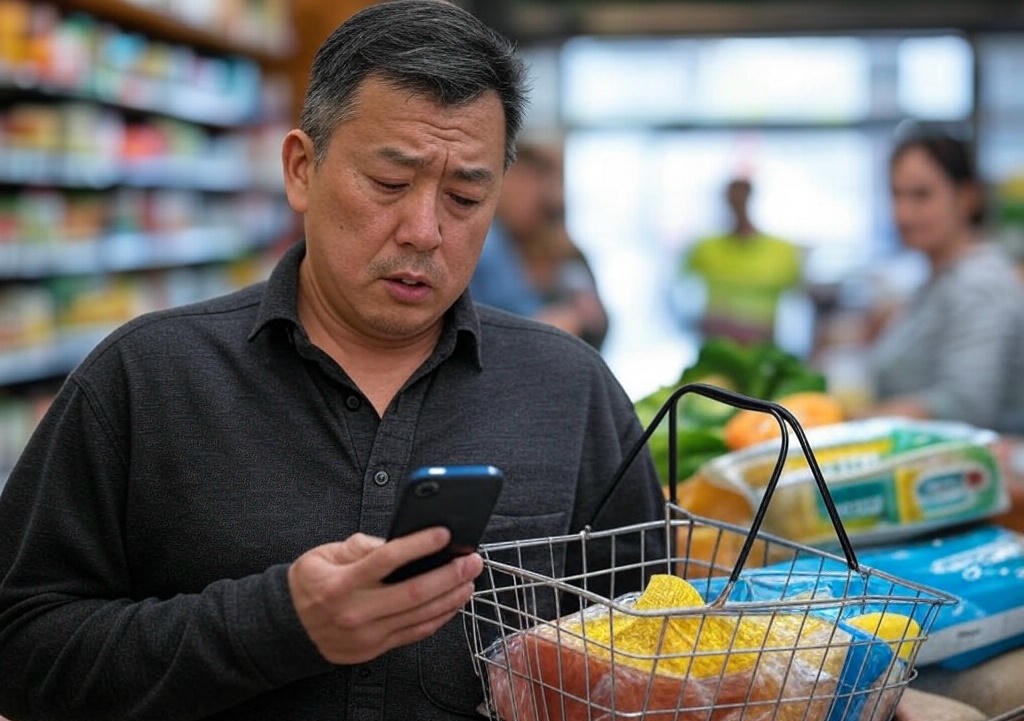The U.S. economy is facing tough times and recent trends show that many Americans are struggling to make ends meet. One major sign of this struggle is that a quarter of U.S. consumers are now using buy-now pay-later (BNPL) services to pay for groceries. At the same time consumer confidence is dropping due to fears about a trade war. These trends point to growing economic stress and uncertainty.

The Rise of Buy-Now, Pay-Later for Groceries
Buy-now, pay-later services like Klarna and Affirm let people split their purchases into smaller payments over time often without interest. These services have become popular because they are an alternative to credit cards which can come with high interest rates. In the past people mostly used BNPL for big purchases like electronics or furniture. But now more Americans are using it for everyday essentials like groceries.
A recent survey by Lending Tree found that 25% of U.S. consumers used BNPL for groceries in 2025 up from 14% in 2024 and 21% in 2023. This jump shows that many people are finding it hard to pay for basic needs upfront. Groceries are something everyone needs so turning to BNPL for them is a clear sign of financial strain. The survey also showed that 41% of BNPL users missed a payment in the past year compared to 34% the year before. Missing payments can lead to high fees which makes things even harder for people already struggling.
Why are so many people using BNPL for groceries? Inflation high interest rates and economic uncertainty are big reasons. Even though the job market has been strong in recent years companies like Walmart and Delta Airlines have warned that demand is slowing down. This means people are spending less because they’re worried about money. BNPL helps them stretch their budgets but it’s risky. The Lending Tree survey found that 60% of BNPL users have taken out multiple loans at once and nearly a quarter have had three or more. Juggling multiple loans can lead to debt problems if payments are missed.
Declining Consumer Confidence and Trade War Fears
At the same time U.S. consumer confidence is falling. Consumer confidence measures how optimistic people feel about the economy and their own finances. When confidence is high people spend more. When it’s low they cut back. Recent reports show that confidence is at its lowest in years largely because of fears about a trade war.
A trade war happens when countries put taxes called tariffs on goods they import from each other. These tariffs make imported goods more expensive which can drive up prices for consumers. In the U.S. President Donald Trump has been pushing for tariffs on countries like China, Mexico and Canada. While some tariffs have been paused others like a 145% tariff on Chinese imports are still in place. These policies have created a lot of uncertainty making it hard for businesses and consumers to plan ahead.
The University of Michigan’s consumer sentiment survey reported that confidence dropped 8.4% in April 2025 hitting its lowest level since June 2022. The Conference Board’s consumer confidence index also fell to 92.9 in March 2025 the lowest since January 2021. People are worried about higher prices, a possible recession and job losses. The survey showed that expectations for inflation are rising with consumers expecting prices to go up by 6.5% in the next year. This fear of rising prices combined with uncertainty about trade policies is making people nervous.
Why These Trends Matter
The growing use of BNPL for groceries and declining consumer confidence are connected. Both show that Americans are feeling squeezed by economic challenges. Inflation has made everyday items more expensive and high interest rates make borrowing money costly. Tariffs could make things worse by raising prices even more. For example experts estimate that tariffs could cost the average household $3800 a year. When people are already struggling to afford groceries higher prices could push them further into debt.
These trends also affect the broader economy. When consumer confidence is low people spend less which hurts businesses. Companies like Walmart and Delta Airlines are already seeing weaker sales. If spending keeps slowing down it could lead to a recession where the economy shrinks instead of grows. The Federal Reserve which sets interest rates is watching these trends closely. They expect economic growth to slow to 1.7% in 2025 down from 2.1% in 2024. They also predict higher inflation which could make things tougher for consumers.
What Can Consumers Do?
For people feeling the pinch there are steps to take. First use BNPL carefully. It can help with budgeting but only take on payments you know you can make. Missing payments can lead to fees that add up quickly. Second build an emergency savings fund even if it’s small. Experts suggest saving at least one month’s worth of expenses to cover unexpected costs. Third cut back on non essential spending like eating out or buying new clothes to free up money for necessities.
Looking Ahead
The rise of BNPL for groceries and falling consumer confidence are warning signs that the U.S. economy is under stress. Inflation high interest rates and trade war fears are making it harder for people to afford everyday items. While BNPL can help in the short term it’s not a longterm fix. Policymakers businesses and consumers all have a role to play in addressing these challenges. For now staying cautious and planning ahead is the best way to navigate these uncertain times.
